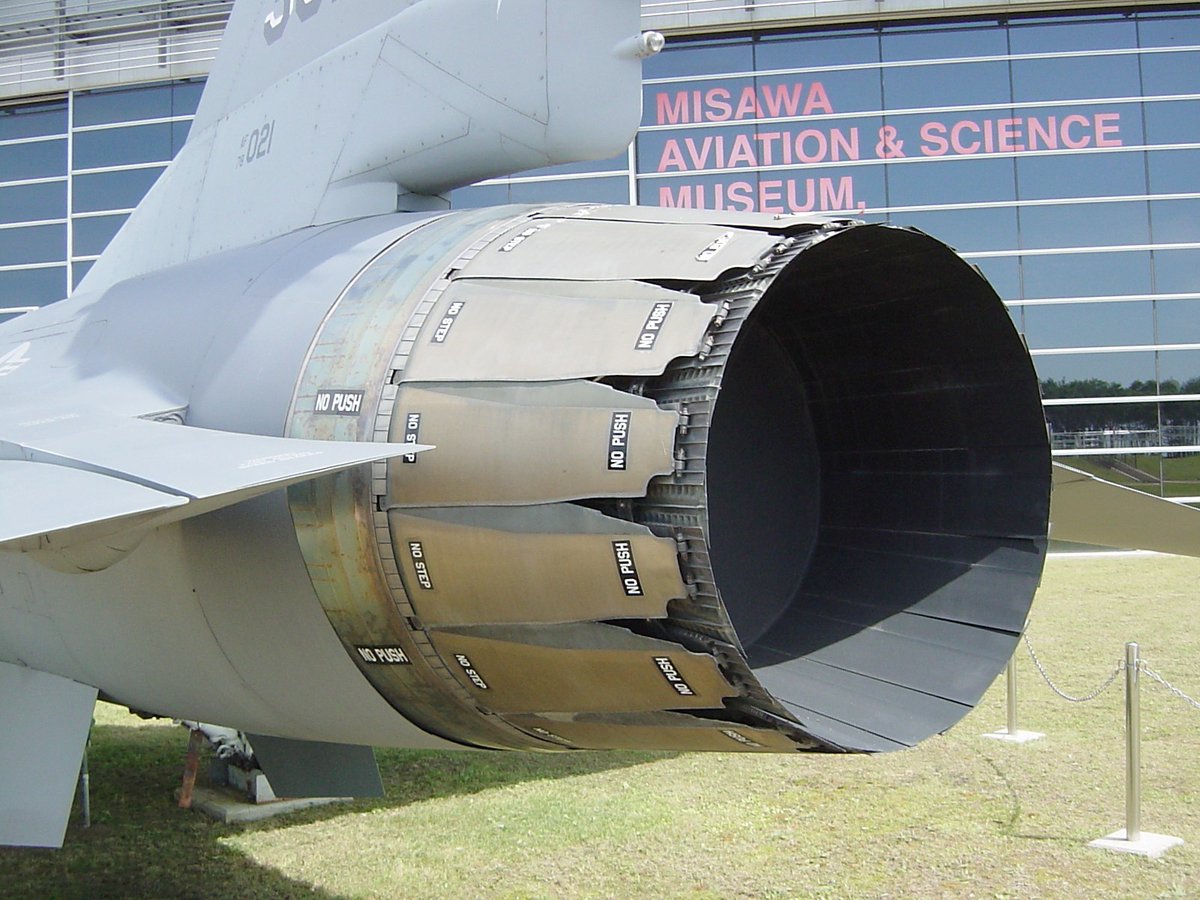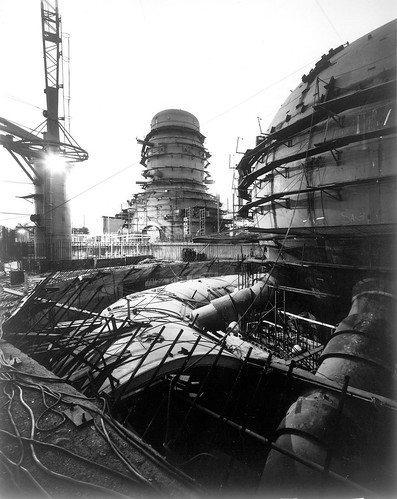Fighter aircraft!
They're warrior angels, six-winged Seraphim bringing wrath from above.
But why are these sky warriors the shape that they are?
Fighter plane aerodynamic design 101.
They're warrior angels, six-winged Seraphim bringing wrath from above.
But why are these sky warriors the shape that they are?
Fighter plane aerodynamic design 101.

There are a dizzying array of fighter aircraft in the skies now, but the more astute of you will have noticed recurring themes, and even entire countries with coherent design philosophies.
Is there a best approach, or is it horses for courses?
Let's look at the basics…
Is there a best approach, or is it horses for courses?
Let's look at the basics…

At supersonic speeds, shockwaves form. Blunt objects, such as high lift aerofoils, do poorly at high Mach, but sharp skinny aerofoils do poorly in aggressive manoeuvres. A fighter needs both.
What to do?
Fortunately, sweeping the wing opens up our options…


What to do?
Fortunately, sweeping the wing opens up our options…



The delta wing: A European affair.
A long root chord gives a thick main spar while keeping a low thickness:chord ratio. Its area gives low wing loading, even with a low span. It's sturdy, has good internal volume for fuel, can omit a tailplane to save weight, and also…
A long root chord gives a thick main spar while keeping a low thickness:chord ratio. Its area gives low wing loading, even with a low span. It's sturdy, has good internal volume for fuel, can omit a tailplane to save weight, and also…

…The sharply swept delta, at high angles of incidence, allows high pressure air from the underside to curl over the leading edge and form conical vortices, stabilising airflow at high angles of attack, which is very useful on a fighter aircraft! 

There are problems: A delta wing, though slender, has a huge wetted area, so while it's OK for lowering supersonic wave drag it has high viscous drag.
Its low aspect ratio also leads to high induced drag, see below for details.
Its low aspect ratio also leads to high induced drag, see below for details.
https://x.com/Jordan_W_Taylor/status/1652758532901462021?t=1hCbUAAux82LQkz6KHj9oA&s=19
There are other issues: The huge wing can create a deep stall where turbulent air occludes control surfaces and prevents recovery. This is remedied either with a compound delta, where different sweep angles stop the entire wing stalling at once, or with a canard foreplane. 



The trapezoidal wing: American flair.
With a swept-back leading edge and swept forward trailing edge, this wing, common on US fighters, is structurally efficient and so can be kept thin & light: And a thin, highly loaded trapezoidal wing is good for transonic drag reduction.
With a swept-back leading edge and swept forward trailing edge, this wing, common on US fighters, is structurally efficient and so can be kept thin & light: And a thin, highly loaded trapezoidal wing is good for transonic drag reduction.

Wave drag & the area rule.
As Mach number increases, so does wave drag, related to the longitudinal cross-sectional area distribution of an aircraft: To minimise wave drag this should be small, and changes should be smooth.
The YF23 shows how the trapezoidal wing aids this.
As Mach number increases, so does wave drag, related to the longitudinal cross-sectional area distribution of an aircraft: To minimise wave drag this should be small, and changes should be smooth.
The YF23 shows how the trapezoidal wing aids this.

The trapezoid makes it easier to achieve an elliptical lift distribution, handy for induced drag reduction. They also have a centre of lift further forward than deltas, meaning tailplanes and flaps are easier to integrate.
Their angles of sweep are favourable for stealth.
Their angles of sweep are favourable for stealth.

Trapezoidal problems.
They are more highly loaded than deltas, impinging on turning performance. They also stall at lower incidence angles, unless very highly swept, and so require LERX or canards.
They are more highly loaded than deltas, impinging on turning performance. They also stall at lower incidence angles, unless very highly swept, and so require LERX or canards.

LERX: Leading Edge Root eXtensions.
Specialist vortex generators: The F18 shows them to great effect, where they're used to generate powerful conical vortices over the wing, stabilize flow, improve mixing and delay stall.
Specialist vortex generators: The F18 shows them to great effect, where they're used to generate powerful conical vortices over the wing, stabilize flow, improve mixing and delay stall.

The swept-back wing: A Russian bear.
Both leading and trailing edges are swept back, these have lower wing loading than trapezoidal, higher viscous drag but often lower induced drag owing to a relatively high aspect ratio. There's always a tailplane, sometimes foreplanes.
Both leading and trailing edges are swept back, these have lower wing loading than trapezoidal, higher viscous drag but often lower induced drag owing to a relatively high aspect ratio. There's always a tailplane, sometimes foreplanes.

Size.
This, too, reflects design intent: Contrast compact European canard deltas, designed for short-medium range mission profiles, to Russian giants, where geography, range requirements and heavy long range weapons drove platform evolution.

This, too, reflects design intent: Contrast compact European canard deltas, designed for short-medium range mission profiles, to Russian giants, where geography, range requirements and heavy long range weapons drove platform evolution.


Canard foreplanes.
Pitch control & vortex generator in-one, canards also have the benefit of acting in the direction of pitch: During pitch-up, a canard increases its lift whereas a tailplane would need to generate negative lift, making canards useful for short field operations
Pitch control & vortex generator in-one, canards also have the benefit of acting in the direction of pitch: During pitch-up, a canard increases its lift whereas a tailplane would need to generate negative lift, making canards useful for short field operations

Most fighter aircraft have a negative static margin, where the aircraft's aerodynamic centre lies ahead of the centre of gravity.
This bequeaths agility, at the cost of stability. Many fighters are unstable in roll & pitch, making full authority digital flight control crucial!

This bequeaths agility, at the cost of stability. Many fighters are unstable in roll & pitch, making full authority digital flight control crucial!

Oddballs you won't see: Forward-sweep.
It retains stability well at high angles of attack, has low induced drag, is good for highly manoeuvrable platforms and yet…
…aeroelasticity renders it dangerous or impractical.
It retains stability well at high angles of attack, has low induced drag, is good for highly manoeuvrable platforms and yet…
…aeroelasticity renders it dangerous or impractical.
https://x.com/Jordan_W_Taylor/status/1662419964765061122?t=hLGSq1tP-boxd90HIqmbkw&s=19
Wing placement (high/ low/ mid).
A design balance between stability (low wings reduce roll stability, high wings the opposite), room for deployed hardware, structural concerns and landing gear height. Most fighters favour mid or low placement.

A design balance between stability (low wings reduce roll stability, high wings the opposite), room for deployed hardware, structural concerns and landing gear height. Most fighters favour mid or low placement.


Engine intakes: Serpentine ducts.
If you want to reduce frontal radar cross-section then the front face of an engine is not your friend: Engine compressor blades are great radar reflectors.
Apply an S-curve to your engine intake and you minimise this.
If you want to reduce frontal radar cross-section then the front face of an engine is not your friend: Engine compressor blades are great radar reflectors.
Apply an S-curve to your engine intake and you minimise this.

Engine intakes: Over/ Under?
You don't want your engine ingesting turbulent, choppy air during intense manoeuvres, so ventral or cheek inlets are common and keep airflow clean.
Dorsal, top-mounted inlets are almost unheard of.
You don't want your engine ingesting turbulent, choppy air during intense manoeuvres, so ventral or cheek inlets are common and keep airflow clean.
Dorsal, top-mounted inlets are almost unheard of.

Engine intakes: Variable geometry.
Not always used: For a subsonic aircraft this matters less, but performance at high Mach requires air to be compressed and decelerated subsonic before it reaches the engine. Tailored shockwaves are positioned with variable geometry inlets.

Not always used: For a subsonic aircraft this matters less, but performance at high Mach requires air to be compressed and decelerated subsonic before it reaches the engine. Tailored shockwaves are positioned with variable geometry inlets.


Engine nozzles: Variable geometry.
Ideally an engine nozzle should accelerate and expand the hot exhaust air to close to local atmospheric pressures. Given the vast range of speeds & altitudes a fighter operates at, that usually means variable geometry nozzles.


Ideally an engine nozzle should accelerate and expand the hot exhaust air to close to local atmospheric pressures. Given the vast range of speeds & altitudes a fighter operates at, that usually means variable geometry nozzles.



Engine thrust vectoring.
Useful for post-stall manoeuvre, short field operations and extreme altitude engagements, these provide pitch/ roll control by controlling exhaust direction.
Complex & heavy, these systems are not always worth it.
Useful for post-stall manoeuvre, short field operations and extreme altitude engagements, these provide pitch/ roll control by controlling exhaust direction.
Complex & heavy, these systems are not always worth it.
The Diverterless Supersonic Inlet (DSI).
To prevent the engine ingesting sluggish boundary layer air, a splitter or diverter is often used. This is effective but complex and not stealthy.
The F35’s DSI uses pressure contouring to divert the boundary layer without one.

To prevent the engine ingesting sluggish boundary layer air, a splitter or diverter is often used. This is effective but complex and not stealthy.
The F35’s DSI uses pressure contouring to divert the boundary layer without one.


Actuation:
On most fighters the horizontal tail surfaces or canards, if used, are all-movable. They need to be powerful and precise, with actuation that tolerates minimal freeplay: A tolerance of just 0.034 degrees is typical for all-movable control surfaces.
On most fighters the horizontal tail surfaces or canards, if used, are all-movable. They need to be powerful and precise, with actuation that tolerates minimal freeplay: A tolerance of just 0.034 degrees is typical for all-movable control surfaces.
Internal bays?
What was once a bomber thing is coming to fighter aircraft, driven by compact weapons and the need to reduce radar cross-section. Most 5th generation fighters have an internal bay, though it brings design compromise elsewhere.
What was once a bomber thing is coming to fighter aircraft, driven by compact weapons and the need to reduce radar cross-section. Most 5th generation fighters have an internal bay, though it brings design compromise elsewhere.

Cockpit or no cockpit?
The latest 6th generation designs cast even the cockpit as an option. A plausible concept is an advanced stealthy manned fighter commanding a group of capable, but more disposable, combat drone fighters.
Who knows what the future will bring…
The latest 6th generation designs cast even the cockpit as an option. A plausible concept is an advanced stealthy manned fighter commanding a group of capable, but more disposable, combat drone fighters.
Who knows what the future will bring…

There is no standard generic mission, and no standard generic fighter design. That, at least, keeps things interesting for us nerds.
As always, articles used are shown, I hope you enjoyed this!

As always, articles used are shown, I hope you enjoyed this!


• • •
Missing some Tweet in this thread? You can try to
force a refresh























